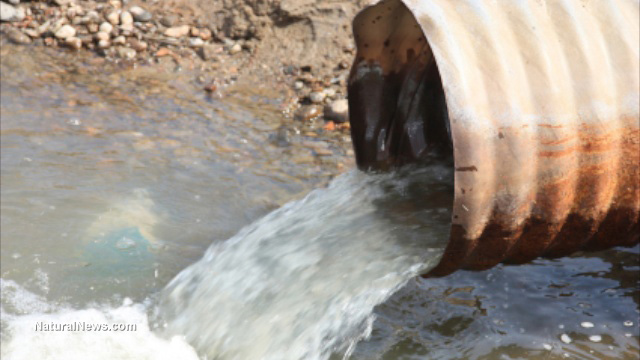| Online: | |
| Visits: | |
| Stories: |

| Story Views | |
| Now: | |
| Last Hour: | |
| Last 24 Hours: | |
| Total: | |
Human Sewage Eating Away Sewer Pipes Throughout Drought-Stricken California

Jennifer Lilley
(NaturalNews) As if California doesn’t have enough problems, ranging from its severe drought to the ongoing threat of forest fires, it’s now experiencing the possibility that human sewage may soon be strewn about its streets. The problem is facing San Francisco in particular; there, pipes are about 150 years old and considered a “working relic.” The term working puts it kindly since they’re basically so old that they’re much more prone to problems than newer ones.(1)
Couple an already fragile piping system with 1) less water flow due to water conservation efforts, and 2) the amount of human waste traveling through them remaining the same, if not more than before, and you’ve got a recipe for disaster. Simply put, you’ve got an old system which now has less drainage capability grappling with a great deal of human waste trying to make its way through. Yet it can’t very easily, and therein lies the problem.
San Francisco Public Utilities Commission Assistant Manager Tommy Moala, said human waste is “an organic material. It breaks down. It creates hydrogen sulfide. That eats up the concrete in the pipes if it sits there long enough.”(1)
Problems traced to aging pipes not uncommon in California
Just over five years ago, a broken pipe in San Francisco caused a minimum of 500,000 gallons of partially treated sewage to flow into the San Francisco bay, something which was ultimately contained by several sanitary plant officials. It was believed that sewage maintenance, the plant’s location on a steep hill, the pipe’s continuous exposure to tide water and an aging pipe system caused the problem. However, throughout the entire state, aging pipes are wreaking havoc on an almost regular basis.(2)
In 2013, a 75-year-old pipe burst at San Francisco’s Filbert and Mason streets, causing gravel, dirt and water to grow into an ankle-deep mess. Intersections were closed, cable cars were shut down, and some area households didn’t have water. Cold February temperatures, coupled with — surprise, surprise — an aging piping system were to blame.(3)
The issue of outdated pipes isn’t just problematic for San Franciscans. During the summer 2014, a water main in Sacramento, California broke, disrupting activities at UCLA and resulting in a loss of 8 million gallons of water. Max Greenberg of the Trenchless Company in Sacramento said, “Our infrastructure is aged and beyond it’s life expectancy.”(4)
Getting over taboo, awkward thoughts involving waste
While the issue of old pipes persists, the topic of sanitation is one that apparently renders people awkward. “Sanitation is not a sexy issue,” said Dan Yeo, a senior policy analyst at WaterAid, a nongovernmental organization focusing on hygiene, water and sanitation issues. “It’s about s—, and that’s not particularly attractive. It’s a taboo to talk about in a lot of contexts.” Yeo therefore argues that people tend to see broken, failing pipe infrastructures as one thing, while sanitation issues are generally brushed under the carpet. “That taboo is one reason that sanitation hasn’t taken off as a major issue in the public’s mind,” he says.(5)
Read more Natural News:
http://www.naturalnews.com/050447_human_sewage_aging_infrastructure_California.html#ixzz3gLraHBvf



